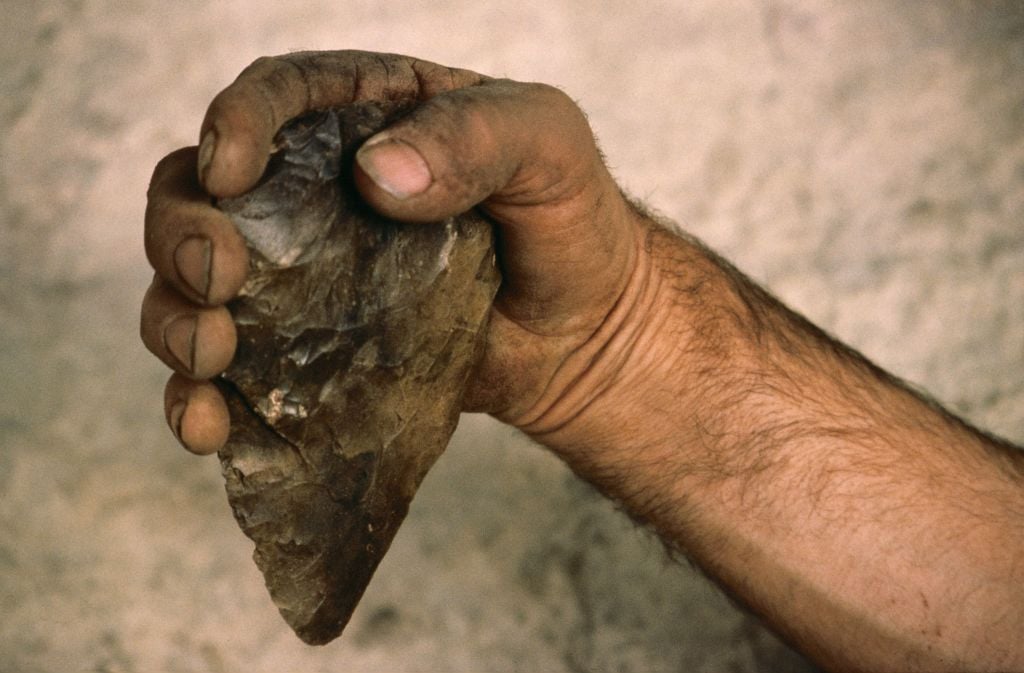
Experts have discovered ancient stone tools that could be evidence early humans survived one of the largest volcanic eruptions in prehistory and the catastrophic climate change unleashed in its aftermath. The Toba super-eruption 74,000 years ago has long been thought to have caused a volcanic winter across all of South Asia, nearly extinguishing early humankind in the region. But new findings in India indicate that hunter-gatherers managed to survive and adapt to these harsh, new conditions.
Today, the site of the Toba super-volcano in Sumatra, Indonesia, is a huge lake surrounded by lush flora. The prehistoric volcanic eruption was so massive, many experts believe it resulted in a 1,000-year-long cooling of the Earth’s surface and covering the entirety of South Asia, including China, India, and Indonesia, with several inches of ash.
Professor Chris Clarkson, an archaeologist at the University of Queensland in Brisbane, Australia, says that experts previously believed there were only a few survivors who lived in Africa. Those that survived adapted by developing more sophisticated social, symbolic, and economic strategies, in turn enabling them to repopulate Africa and migrate on into Europe, and into Asia, and the continental shelf that is now Australia, by around 60,000 to 50,000 years ago.
Clarkson and his colleagues have now discovered stone tools in Dhaba, India, that are similar to the tool used by Homo sapiens in Africa at the same time. “These toolkits were present at Dhaba before and after the Toba super-eruption, indicating that populations survived the so-called catastrophe,” he said. The rudimentary carved tools of various stones also includes a samples of arrows, blades, and scraper tools, suggesting that hunter-gatherers continued to survive there.
“While the Toba super-eruption was certainly a colossal event, this natural disaster may only have had a minor impact on human populations living in India at the time,” Clarkson said. The experts’ research and archaeological finds show that at least a few hunter-gatherers managed to endure the harsh conditions after the eruption and the climate change it caused.